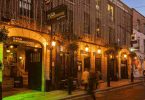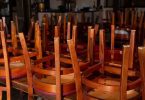Lebanese star still shining brightly
 Chateau Musar has long been Lebanon’s leading winery, and unashamedly old-fashioned with it. A few years ago however, the wines suffered criticism of too much volatile acidity, which is no real surprise as old-fashioned wines have always been, well, rather volatile.
Chateau Musar has long been Lebanon’s leading winery, and unashamedly old-fashioned with it. A few years ago however, the wines suffered criticism of too much volatile acidity, which is no real surprise as old-fashioned wines have always been, well, rather volatile.
Truth is, it’s wine drinkers rather than the wines that have changed; we like our wines clean, fruit driven and free from bacteriological assassins. So although diehard fans of Musar remained content, the estate itself has moved to give the wine a slightly more modern feel and to cut down on the bottle variation, which is often a product of volatility.
I don’t know how this has gone down with older members of the Hochar family, owners of Musar, but Auguste Hochar who recently visited Berry Bros is one member of the younger generation who is well pleased with the results. “Lately we’ve tried to bring down volatility…we also went back to a cork supplier that we used to use back in the 60s and 70s. I think both things have had a good effect,” Hochar explained.
Musar wines, even the whites, are only released when fit to drink and this means Musar holds one of the greatest cellars of aged wines in the world. This has had its impact on cash flow from time to time and it is to the credit of the estate that they’ve persisted with the policy even when times have been tough, and they have often been tough in Lebanon. Of course, ready to drink doesn’t mean necessary to drink, and the Hochars maintain that most vintages will keep for decades.
Musar Blanc, a blend of two local varieties related to chardonnay and semillon, gave a rich nutty aroma in the 2001 vintage; semillon-style flavours of smooth, nutty lemon but a decent balancing acidity leading to a fresh finish. Not cheap at a trade price of €180 per case but delicious.
The 1991 is €480 per case and shows soft lemon, toast and nut flavours but here the price makes one critical and though it’s enjoyable and characterful, at this money, I would like a bit more weight at mid palate.
As for reds, 2001 had a perfumed quality to the nose with very ripe red fruit flavours and tasty berry fruit to finish. For a Musar, it could be a relatively early drinker. 1998 was lovely and seemed the product of a slightly cooler vintage. The fruits seemed more youthful and better structured than in 2001, with flavours of plum and cherry, and very good length. With both vintages having a price tag of €252 trade per case, I think I would rather have this one.
1995 (€440 per case) reminded me of an old Italian sangiovese; that sniff of old libraries, dry cherry aromas and flavours and, yes, a hint of volatility. On the palate it was beautifully textured with stewed plum and cherry flavours and just a hint of dryness to the finish.
1993 had almost velvety plum aromas. Again, there seemed a touch of volatility but this posed no problem to the palate, which had lots of plum, cherry and berry. Flavours fanned out well into a decent mid palate weight and good length of finish.
This has the weight, structure and acidity to hold for years but I wonder if it will ever really taste better than it does now? It will cost €480 a case to find out, but for something of genuine interest which won’t be dying off any time soon, it might be worth the punt.
Musar wines are available at Berry Bros and from Findlater Grants.








